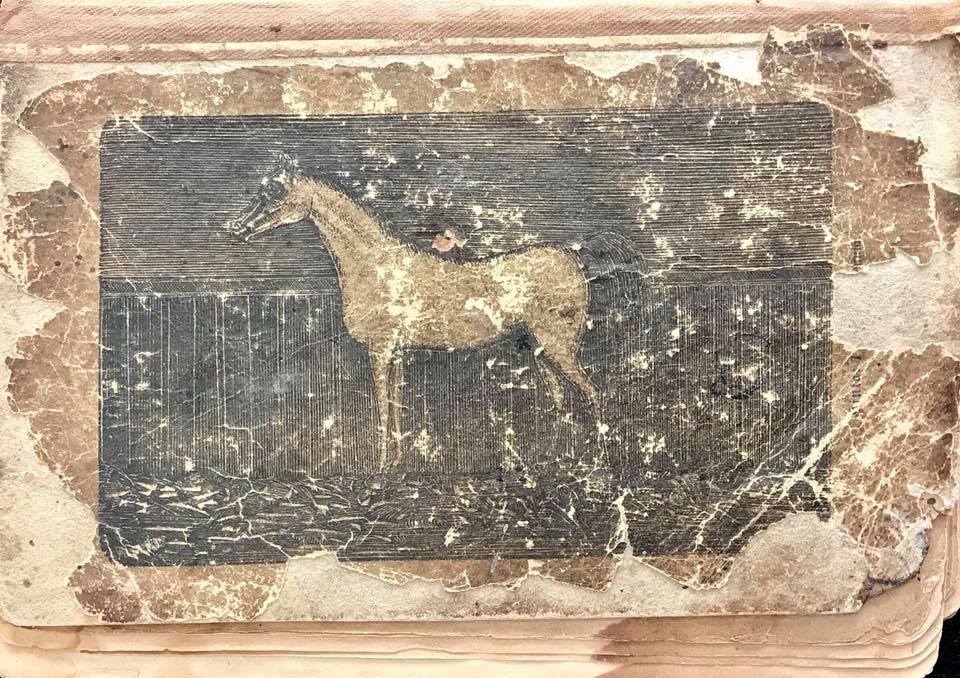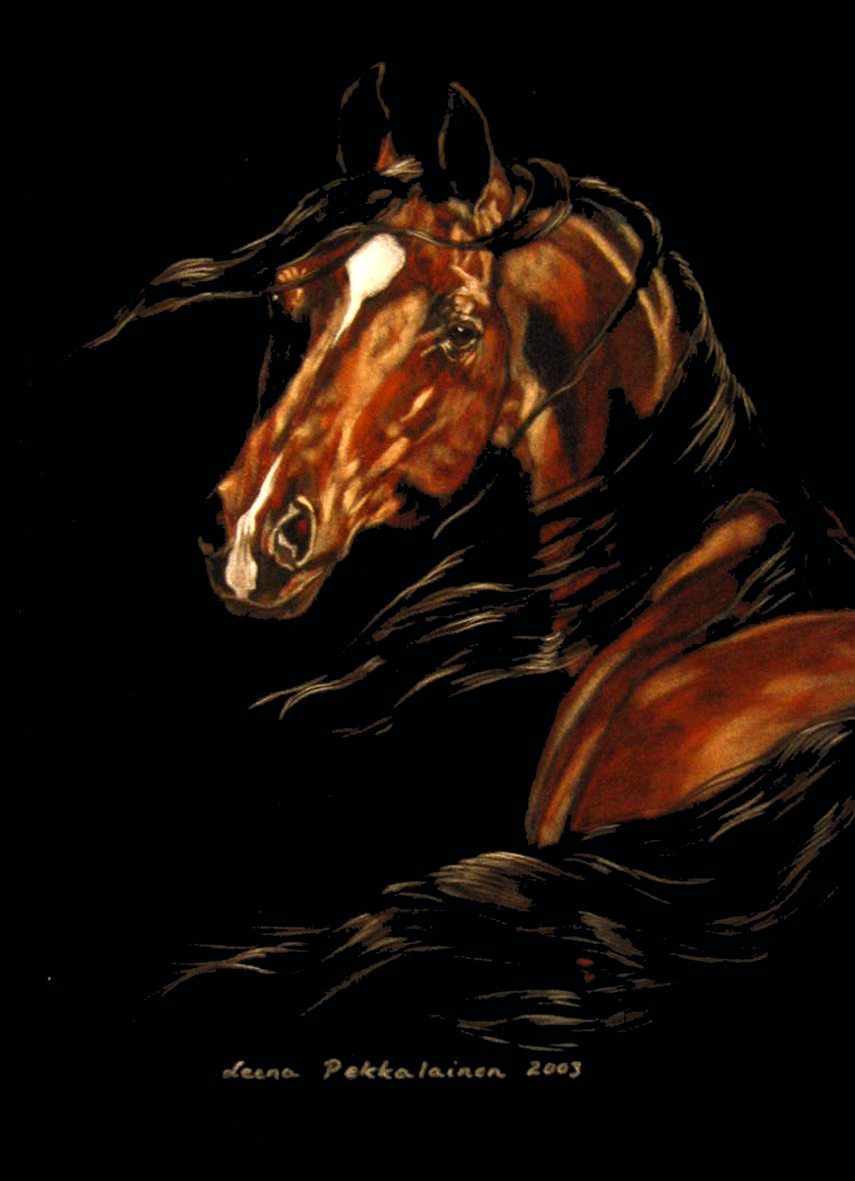Click on the pictureS to get the Nephilim Quest books with a discounted price
|
SAMUELSSON'S HORSE CARE TIPS 1-10
|
|
|
The age of the horse is normally told by its teeth. The teeth of a foal are called milk-teeth, and the ones that appear after these have fallen out, are called iron-teeth (permanent teeth). Otherwise the teeth of a horse are divided to: back-, jaw-teeth and front incisors; all in all a horse has: 40 teeth for a stallion and 36 for a mare. When a foal is at its third year, the front incisors will be pushed out. There are 4 of them, two at the upper and two at the lower jaw. This is the first pushing out, and 4 new, "iron teeth" or permanent teeth will grow in their place. On its fourth year the horse will push out again two teeth from the upper jaw, and two from the lower - the next ones on both sides behind the permanent teeth that appeared after the first milk teeth were pushed out. These teeth are also called middle teeth / jaw teeth (premolar). On his fifth year the 4 hindmost or the remaining milk teeth are pushed out. This is the third and last pushing out of teeth. These new iron teeth (permanent teeth) have a hole / groove (cup) on top, which is called the grain groove. When the horse is in its seventh year, this groove wears out from the first pushing out - that is the middle teeth (premolars), both on upper and lower jaw. This is when a hook appears on the upper teeth, which is why they are also called the hook-teeth. On the eight year the groove wears off from the teeth of the second pushing out. Also on the ninth year the groove wears off from the last or the hindmost two teeth on the lower side, and the two hindmost upper teeth have a high hook. From tenth to elevent year the tooth-flesh (gum) withdraws lower, and the teeth of the second and third pushing out become sharper. Same happens to the teeth of the first and second pushing out from twelth to thirteenth year. Front teeth twist outward, forming a sharp angle against each other. From then he horse's age is not determined by the teeth. |
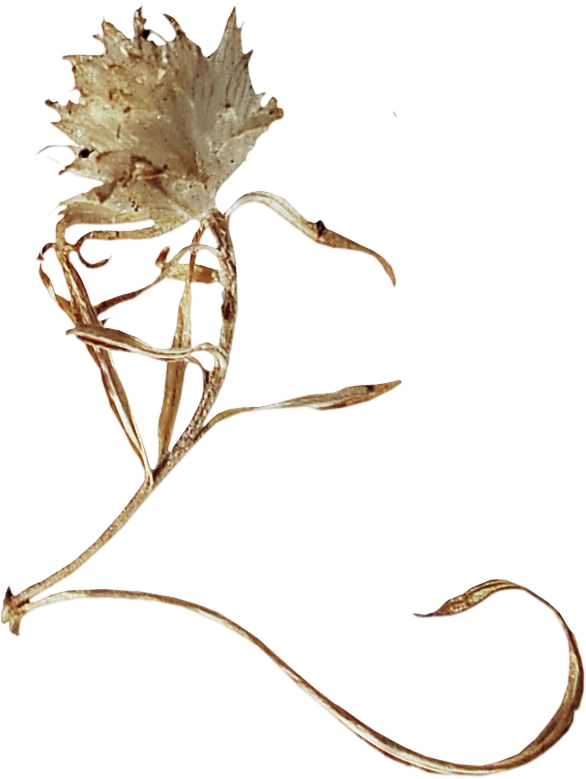 |
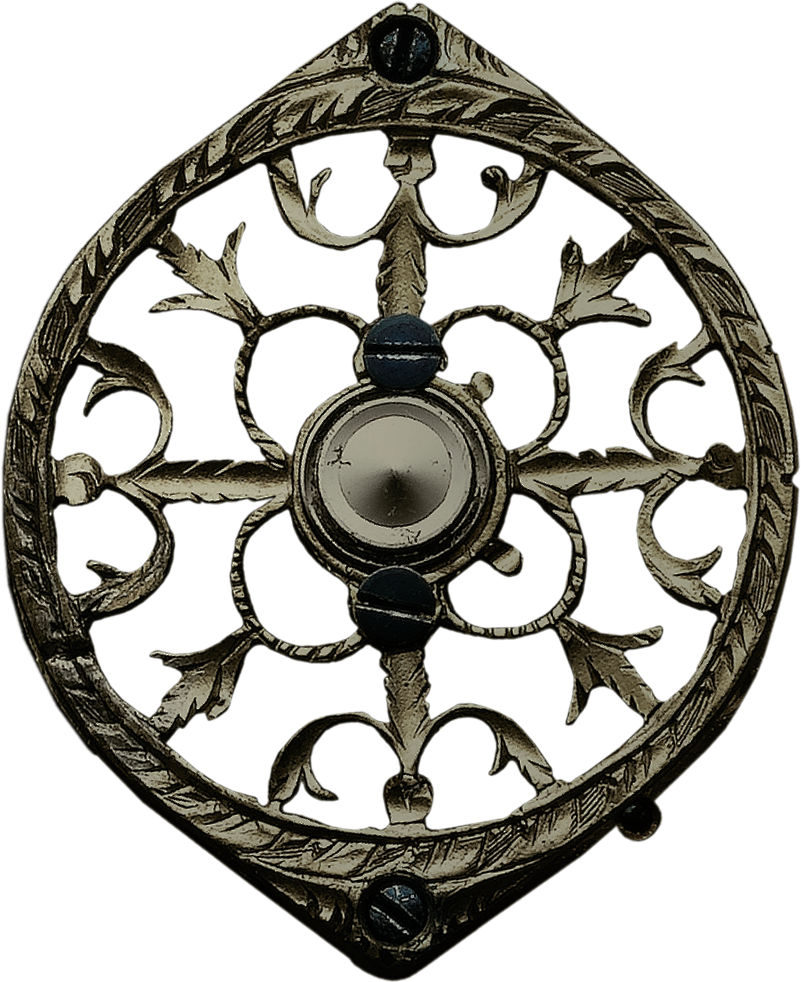 |
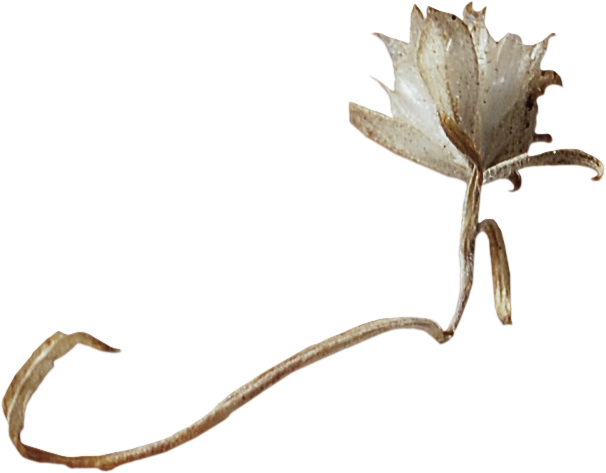 |
2. How to measure the height of the horse from a two-year-old foal. |
|
When a foal is two years old, his bones won't grow much anymore. Take a string and use it to measure from the bone of hoof-joint, beginning from the hoof-feathers, all the way to the belly-joint, and with the same measurement to the ridge of backbone; as long as the legs are, is how high the horse's body will grow. When the horse is six years old, (you can verify this?). |
 |
 |
 |
3. To see if a horse is healthy upon returning back home from a journey and drive |
|
If after taking off the harness the horse breathes out a deep fluttering breath and breathes evenly, rolls on the ground and after getting up breathes with a flutter and shakes his body, the horse is healthy. |
 |
 |
 |
4. The qualities a good stallion needs to have |
|
1) Clean mouth. 2) Big eyes. 3) Thin head. 4) narrow, pointy ears. 5) Beautiful and smooth legs. 6) Free of all inherited faults. |
 |
 |
 |
5. Faults inherited from both stallion and mare. |
|
1) Fatty neck, 2) Skittish 3) Lumps 4) Heart-cramps. 5) Neck pain 6) Craziness 7) Gallstone. 8) Fetlock abscess 9) Canker of hooves |
 |
 |
 |
6. When the horse has been driven so hard it can't breathe well or at all |
|
Block his nostrils for three breaths, then let him blow and walk him back and forth for an hour and while doing this, block his nostrils a little so as to cause fluttering breaths. Don't give him anything to eat or drink. When he is dry again, strongly massage his bones and veins repeatedly with a bunch of straw, so that the blood in his veins begins to move. Also open his lung-vein from one side; if the blood is black, let more blood run, but if it is red, not so much. Given into him 25 grain's worth of Hepar-Antimonio and 6.5 scruples / 130 grains worth of the noble horse-powder (more of which at the end of the book) . After this let the horse stand for an hour. Also rub his bones and veins with spirit and German soap (Soap of Venice). When all this has been done, give the horse a bunch of hay dipped in water, or three at the most, and then some dry hay. Let him drink water where a hot iron has been kept. |
|
 |
 |
 |
7. When a horse is strained, that is: driven hard |
|
Open his thigh-vein, rub the injured spot with the brown ointment (look at the end of the book) twice a day. Do not let him go into water. |
 |
 |
 |
8. When a horse's back is broken or otherwise crushed. |
|
Take two handfuls of rye, finely chopped bark of rowan (not the uppermost bark, but the one nearest to the tree), root of masterwort (Radix imperatoriae), 1,7 ounces ; rockfoil (Saxifraga), two armfuls of root of fern (Phegopteris connectilis syn. P. polypodioides, Thelypteris phegopteris, Lastrea phegopteris, Dryopteris phegopteris) which grow on moss-covered mountains, and to this is added a handful of moss from an oak-tree. Put all of these into a cauldron and pour into the mix two jugs / 1 gallon + 1 pint of cow's urin and one jug / half a gallon + 1,2 fluid ounces of human piss. Boil this down under a lid to a third. After you have taken it away from the hearth, pour in 1/3 quart of spirit Once the mixture has cooled down enough to dip a finger: with a spoon, take both solid and liquid and spread it to the crushed part and then tie a long cloth around it so that it goes around the horse's belly. Warm this ointment once a day, and change the cloth. |
|
 |
 |
 |
9. Pregnancy loss or miscarriage and its causes |
|
This is caused not only by hard driving, but also by the following reasons: if a pregnant mare is tethered or put to stand for a while under eaves or next to spouts / gutters where all sorts of smelly and dirty water runs, and into which all sorts of things are poured into. A horse cannot tolerate such foul odours and miscarriage will happen within an hour. The same happens in large fishing places, where fish are cleaned, or is she is given a drink of stagnant water where fish have been scaled or washed. For this reason I want to advice everyone, that a horse is carefully kept away from such places and drinks, because even good horses have lost their appetite or even died because of such filthiness. |
 |
 |
 |
10. How small foals should be handled, so that they are separated from their mother and put in the stable, so they won't be damaged by worms. |
|
It often happens that when a foal is separated from its mother, he gets inner worms, which torment him, make him suffer and eventually die. Worms come from spoiled food the nursing mare has eaten. For this you give the foal strong water of wormwood (Absinthium) for 14 days. Perhaps he does not want to drink this at first, but he will get used to it. |
|
This is an old pastel painting of mine. An Arab horse, looking over its shoulder while the wind plays with its mane and tail. It is still one of my favourites, and I almost feel sorry for selling it... If you like the painting, click on the picture and you'll be directed to my Redbubble store, where you can buy the design on T-shirts, mugs, notebooks and other gifts. |
|
 Upon subscribing you will get the Prequel to Nephilim Quest: Angel. Over two hundred years before Nephilim Quest 1 / Shadowhunter the roots of the story are planted. A little girl missing her mother, in the palace of the mightiest of the dark Nephilim, hoping for an escape ... This book is not for sale anywhere - only readers who have subscribed to my mailing list will get it. | |||||
The old clock face and the pictures of dried flowers come from a digital scrapbooking collection ThePoetsKeepsakes by Idavi.





